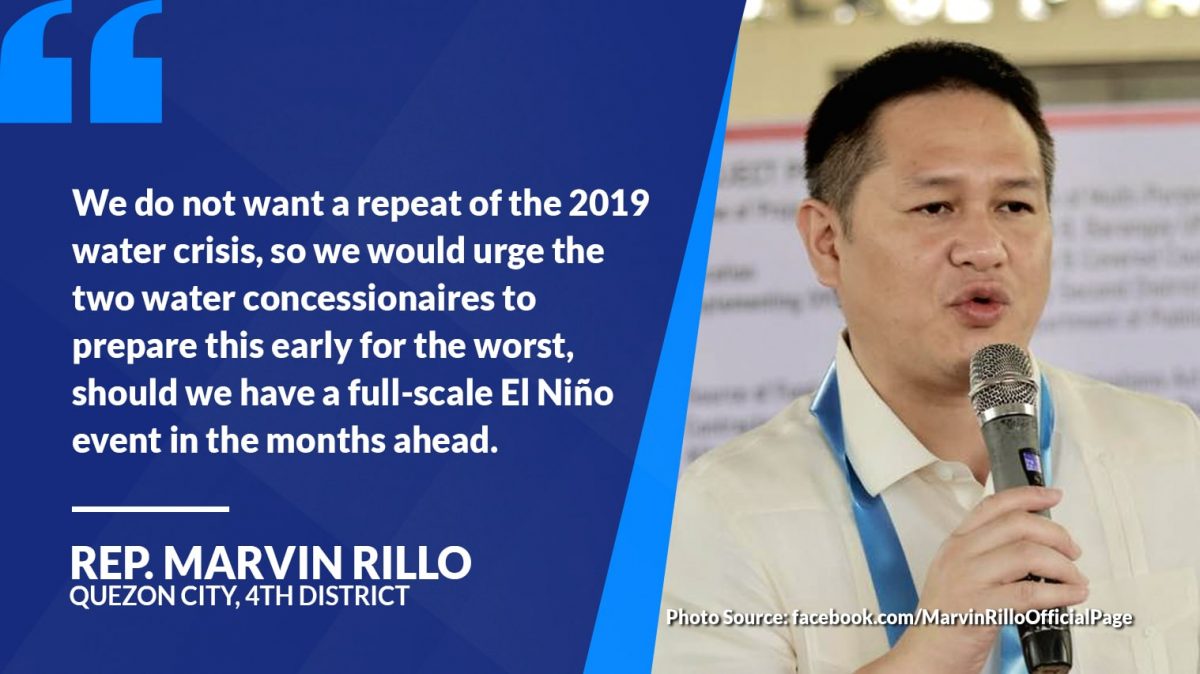Quezon City Rep. Marvin Rillo has urged Maynilad Water Services Inc. and Manila Water Co. to brace for looming El Niño conditions that could potentially put Metro Manila and neighboring provinces at risk of another devastating water shortage.
“We do not want a repeat of the 2019 water crisis, so we would urge the two water concessionaires to prepare this early for the worst, should we have a full-scale El Niño event in the months ahead,” Rillo, vice chairperson of the House committee on Metro Manila development, said in a statement on Sunday.
Last week, PAGASA said Angat’s water level had dropped amid the dry season to 201 meters as of April 2 from 214 meters at the end of December 2022.
“Our worry is that even if the forthcoming El Niño would be less harsh than what we experienced in 2019, Metro Manila might still be vulnerable to a severe water scarcity simply because demand (for water) has since increased,” Rillo said.
The Philippine Atmospheric Geophysical and Astronomical Services (PAGASA) earlier warned that El Niño “will likely develop in the July-August-September season and may persist until 2024.”
El Niño increases the likelihood of unusually low rainfall conditions that could cause the water hoard in dams to fall below functional levels.
In the 2019 full-blown El Niño event, Angat Dam’s water level plunged to record lows, causing Metro Manila and surrounding provinces to reel from a brutal lack of water.
Angat supplies 90 percent of Metro Manila’s potable water and irrigates 25,000 hectares of farmland in Central Luzon.
Last week, PAGASA said Angat’s water level had dropped amid the dry season to 201 meters as of April 2 from 214 meters at the end of December 2022.
In the previous El Niño event that persisted from the last quarter of 2018 to the third quarter of 2019, up to 61 percent of the country endured a drought while the other 39 percent underwent a dry spell.
A drought means three consecutive months of greater than 60 percent reduction from average rainfall, or five consecutive months of 21 to 60 percent reduction from average rainfall.
A dry spell means three consecutive months of 21 to 60 percent reduction from average rainfall, or two consecutive months of greater than 60 percent reduction from average rainfall.


